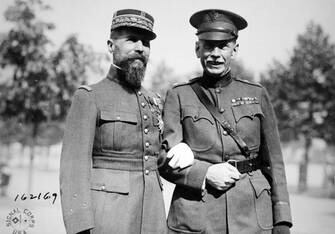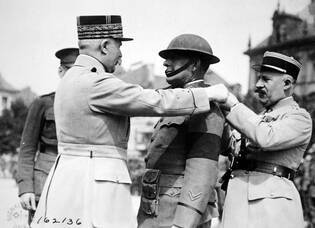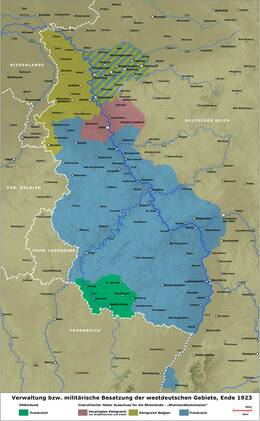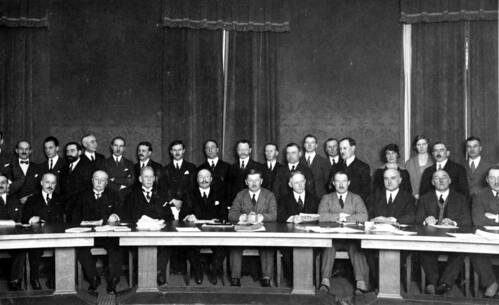Interaction with the Allies
From an American point of view, it made no sense to permanently weaken the German nation. The U.S. Government was more concerned about ensuring a quick recovery of the world economy with Germany playing a role. The United Kingdom demanded the fulfillment of war reparations, but did not want to weaken Germany too much, since it believed Germany should function as a continental counterbalance to France in the long run. The French, however, saw any German resurgence as a threat. Even during the peace negotiations, the French had attempted to acquire the Rhineland for themselves, and when this had failed, they insisted that Germany fulfill the Treaty of Versailles down to the letter. Any deviation was to be sanctioned strictly. At the same time, the French supported a movement of German separatists within the Rhineland. Belgium had also suffered greatly from the war and essentially followed the French policy.
To coordinate the occupation, the Inter-Allied Rhineland High Commission was established in Koblenz on January 10, 1920. Each occupying power was represented by a High Commissioner, and the French High Commissioner Paul Tirard (1879–1945) became its chairman. The goal was to replace the military administration with a civilian body in charge of governing the entire occupation zone.
Since the U.S. Senate had not ratified the Treaty of Versailles, the High Commission never had actual power within the American Zone. In order not to undermine the authority of the High Commission, however, General Allen approved all its directives and published them under his own name. U.S. High Commissioner Pierrepont Noyes (1879–1959), whose opinion was highly respected, remained an unofficial representative to the High Commission without voting rights. A few months later, Noyes was replaced by General Allen himself.
During the meetings of the High Commission, the divergent political goals of the four occupying powers became obvious. And when the French threatened to occupy the German Ruhr area in 1923, an open dispute among the four powers broke out.





